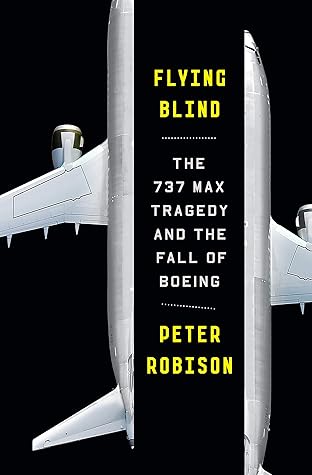More on this book
Community
Kindle Notes & Highlights
Read between
April 22 - April 27, 2022
Once ruled by engineers who thumbed their noses at Wall Street, Boeing had reinvented itself into one of the most shareholder-friendly creatures of the market. It celebrated managers for cost cutting, co-opted regulators with heaps of money, and pressured suppliers with Walmart-style tactics.
The acquisition of McDonnell Douglas a year earlier had brought hordes of cutthroat managers, trained in the win-at-all-costs ways of defense contracting, into Boeing’s more professorial ranks in the misty Puget Sound.
A federal mediator who refereed a strike by Boeing engineers two years later described the merger privately as “hunter killer assassins” meeting Boy Scouts.
Rather than investing in new aircraft, Boeing’s leaders poured more than $30 billion of cash into stock buybacks during the MAX’s development, enriching shareholders and ultimately themselves.
A cross-country flight took fifteen hours with three refueling stops. Douglas
these guys don’t even know what the return on investment will be in this thing,”
probably the most honest, reputable, best company you would ever work for,”
“It was a great problem-solving culture,”
“No expense was spared,” he said. “There was this feeling of camaraderie.”
the “Working Together” motto appeared on a 285-foot screen before thousands of employees gathered at the doors of the massive hangar in Everett.
McDonnell Douglas ramped up buybacks over the next two years;
simultaneously, it cut its R&D spending 60 percent.
we thought they could reduce costs faster than revenue fell,”
He believed in “rank and yank,” firing the bottom 10 percent of managers every year regardless of the overall performance.
Another motto was “fix it, sell it, or close it,” reflecting the unsentimental speed he demanded of managers when it came to results.
Welch’s unflattering nickname—“Neutron Jack,” for the one hundred thousand job cuts he implem...
This highlight has been truncated due to consecutive passage length restrictions.
Boeing would remain Boeing, at least in name.
Douglas machinery in Long Beach that they had just acquired, they reported that it hadn’t been updated since World War II.
Woodard told people their old rival “brought nothing to the table but a lot of headaches.”
it would have been smarter to wait for McDonnell Douglas to falter and buy its military assets at fire-sale prices.
John McDonnell and Stonecipher became Boeing’s two largest individual shareholders.
four of the twelve board seats—a powerful decision-making bloc.
“McDonnell Douglas has bought Boeing with Boeing’s money,”
the people who designed them were scientists and craftsmen, not sharp-elbowed operators.
The deal closed in August 1997.
When the roar of a 747 overhead interrupted his remarks, he flashed contempt for “the Queen of the Skies,” too. “Not one of ours,”
Stonecipher actually made more money than his supposed boss in the year the deal closed:
He frequently lectured people about how Boeing needed to be a “team,” not a “family,”
sons had followed fathers, and grandfathers, to Boeing.
$178 million loss in 1997—the company’s first in fifty years.
In Stonecipher’s first appearance at Boeing’s annual management retreat
in January 1998, he asked the managers in charge of commercial
aircraft production, among the two hundred attendees, ...
This highlight has been truncated due to consecutive passage length restrictions.
should apologize,” he told the group, for falling behind i...
This highlight has been truncated due to consecutive passage length restrictions.
and therefore causing the entire company to mi...
This highlight has been truncated due to consecutive passage length restrictions.
goals. The only threat to Boeing came from within—the failure to e...
This highlight has been truncated due to consecutive passage length restrictions.
Stonecipher relished the free rein that Condit’s indecisiveness and aversion to conflict afforded him.
The board agreed to appoint Stonecipher acting chief financial officer.
Boeing would spend as much as $4.5 billion to buy back 15 percent of its shares.
she reached for a metaphor to explain why the proud engineers at Boeing, always so focused on building planes that went higher, faster, and farther, needed to think more about profits.
It bothered him to see professionals treated like “line-replaceable units”
he found lots of little benefit cuts—less
he was moving Boeing’s headquarters to a city far removed from its workers and their communities, the better to make cold calculations about the future of the jet business.
he would move the headquarters to one of three cities: Chicago, Dallas–Fort Worth, or Denver.
It would be “a new, leaner corporate center focused on shareholder value,”
The Boeing World Headquarters would be thirty-six stories above the Chicago River in what used to be called the Morton Thiokol Building—named, ironically, after the infamous maker of the failed O-rings in the Challenger explosion.
One asked him why Boeing needed so many engineers in coordination meetings (like the huge gatherings that had kept the 777 on track). “In my world,” the analyst said, “the next word after coordination is cost.”
“So we’ll do the experiment. If you’re right, then you and everybody who looks like you will be happy. And if we launch a new airplane program and it doesn’t work, we’ll all be unhappy.”
“If in fact there’s a reverse takeover, with the McDonnell ethos permeating Boeing, then Boeing is doomed to mediocrity,”
“There’s one thing that made Boeing really great all the way along. They always understood that they were an engineering-driven company, not a financially driven company. If they’re no longer honoring that as their central mission, then over time they’ll just become another company.”


